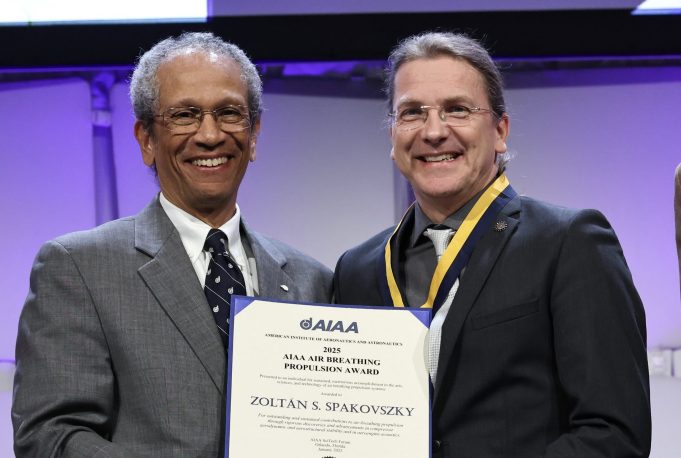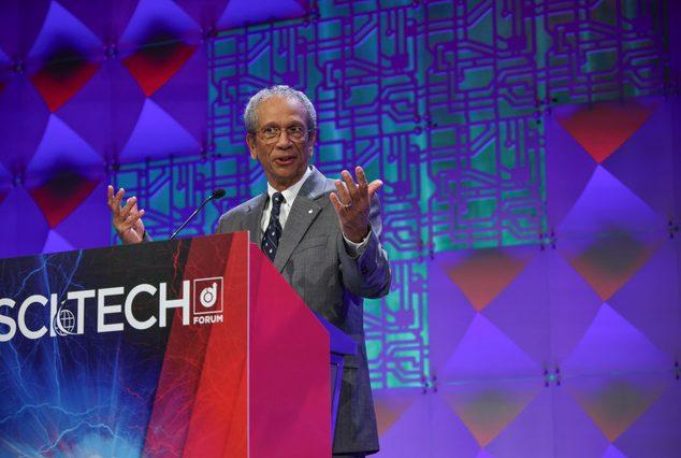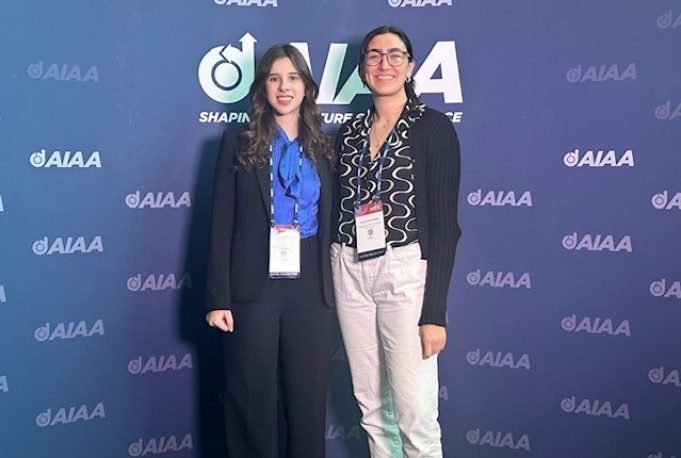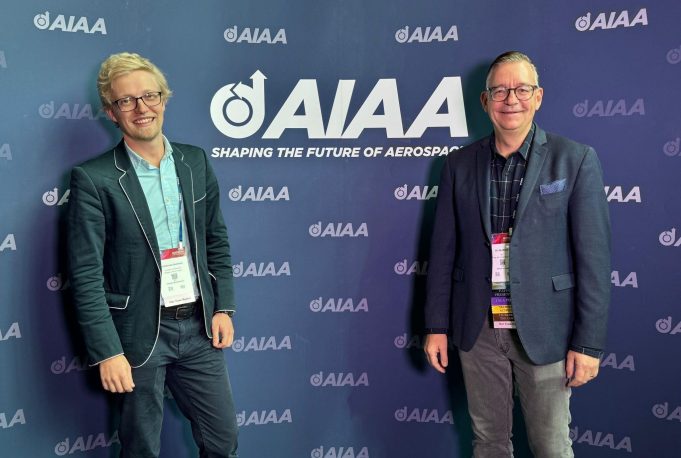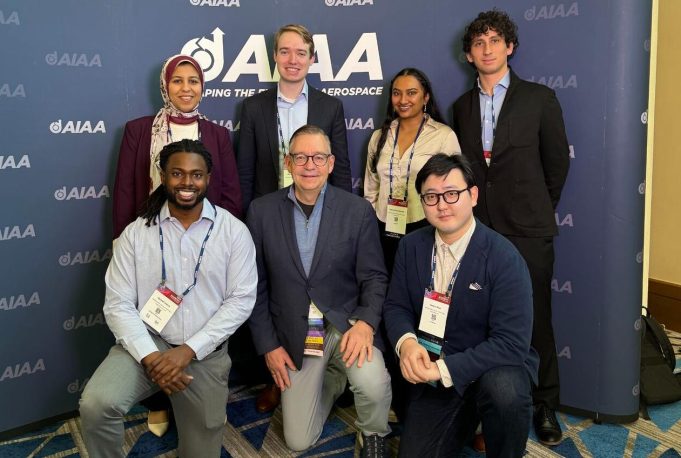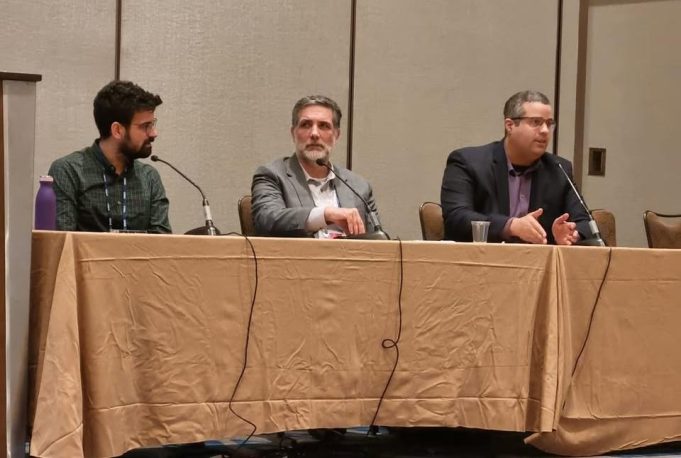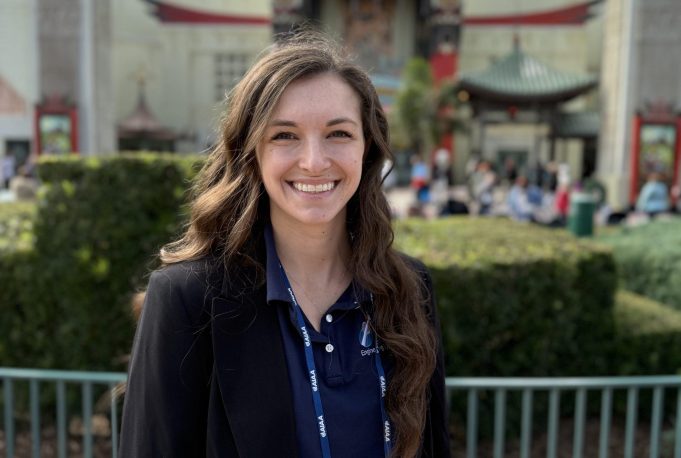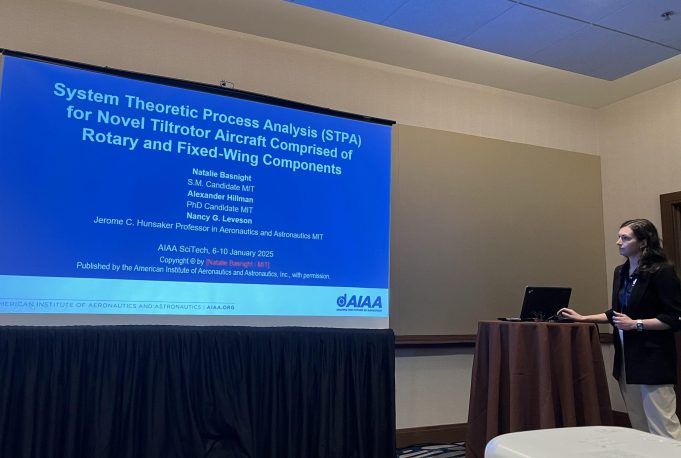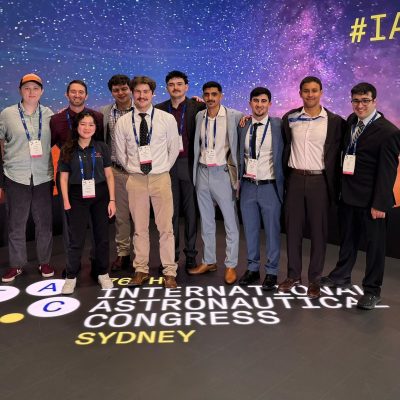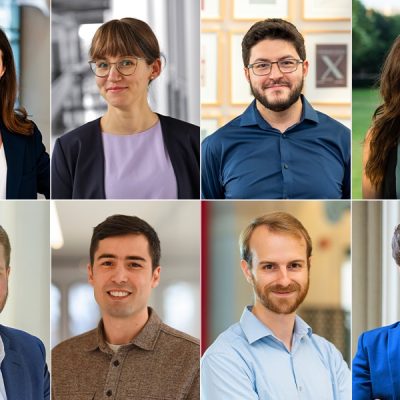AeroAstro at SciTech 2025
AeroAstro had a strong presence at the 2025 AIAA SciTech Forum, the world’s largest gathering for aerospace research, development, and technology. Throughout the five-day event, professors, students, and researchers showcased their work, led sessions, and contributed to panel discussions. Below is a roundup of their participation.
Accolades
Prof. Zoltán S. Spakovszky received the 2025 AIAA Air Breathing Propulsion Award for outstanding and sustained contributions to air-breathing propulsion.
The MIT-UPM team won second place in the Kerbal Space Program Differential Game Challenge, a software design competition where participants develop autonomous agents for maneuvering satellites engaged in non-cooperative space operations.
Workshops and presentations
Prof. Carmen Guerra-Garcia co-organized “Progress and Challenges in Plasma Assisted Combustion,” a workshop designed to steer discussions between the plasma and combustion communities on the status of the field of Plasma Assisted Combustion (PAC) and what we should focus on as of PAC technologies transition into industry. The workshop included invited talks and an industry and government panel.
Prof. Richard Linares and Prof. Victor Rodriguez-Fernandez (UPM) delivered a technical lecture on how to fine-tune Large Language Models to autonomously operate and control space and ground systems for space situational awareness. Linares also participated in a panel on the use of generative AI for control of Aerospace systems.
Research
Aerospace Materials and Structures Lab
Ground testing of spacecraft attitude dynamics during in-space assembly and manufacturing | Harsh G. Bhundiya, Zachary C. Cordero, Michael A. Marshall, Swati Mohan, David Sternberg, Kevin Lo | Researchers modeled and tested spacecraft motion during the construction of structures in space.
Aerospace Plasma Group
Energy pathways in plasma-assisted ignition of ammonia | Raphael Dijoud, Carmen Guerra-Garcia | A numerical study of how electric discharges interact with ammonia flames.
Verification and validation of a scalable HDG code for modeling gas discharges | Sam Austin, Carmen Guerra-Garcia, Jaime Peraire, Cuong Nguyen | This modeling effort focuses on discharges across small gaps in a fuel tank fastener assembly exposed to current flow during a lightning strike.
Autonomy and Embedded Robotics Accelerated (AERA)
Multi-agent multi-target tracking using curriculum learning for reinforcement learning | Caroline Vincent, Andrea Henshall, Sertac Karaman, Begum Cannatoro, Michael Ricard | An approach to address the complicated and challenging problem of coordinating multiple Unmanned Aerial Vehicles (UAVs) tracking multiple, dynamic vehicles using curriculum reinforcement learning.
Dynamics, Infrastructure Networks, and Mobility Research Group (DINaMo)
Vehicle routing problem formulation for efficient tracking of objects in low Earth orbit | Allan Shtofenmakher, Hamsa Balakrishnan | This paper presents a novel optimization formulation to improve the way we task and schedule the sensors used to monitor resident space objects in low Earth orbit.
Engineering Systems Laboratory
Bode performance comparison of model order reduction techniques on a large linear dynamical system: Eigenmode truncation and krylov-subspace based moment matching | Rashmi Ravishankar, Olivier L. de Weck | In this work, two families of model order reduction techniques, Eigenmode Truncation and Krylov Subspace-based Moment Matching, are implemented and tested on a large linear dynamical system.
Global visibility assessment method of in-situ optics constellation for uncatalogued resident space objects | Heekun Roh, Olivier L. de Weck | A proposal for novel space situational awareness concepts for detecting small space debris be detected using the sensor networks on the fleet of satellites already in space.
Modeling vehicle shape change due to ablation using free-form deformation of parametric geometries | Daniel C. Gochenaur, Marshall C. Galbraith, Olivier L. de Weck | An investigation into recent efforts to develop a computational toolset and analysis framework capable of modeling the path-dependent change of vehicle shape due to ablation during high-ablation atmospheric entry maneuvers.
Multi-mode launch vehicle trajectory simulation for failure prediction | Mennatallah M. Hussein, Olivier L. de Weck | This paper introduces a multi-mode simulation framework for assessing various failure scenarios.
Onboard computing for autonomy and decision making in satellite systems: An overview | Rashmi Ravishankar, Olivier L. de Weck | Addressing the need for spacecraft equipped with greater intelligence and autonomy with onboard, real-time decision-making abilities on weight, power, and radiation constrained hardware.
Orbit plane rotation using aerocapture | Daniel Gochenaur, Michael Jones, Johannes Norheim, Olivier L. de Weck | An investigation into the feasibility of intentionally performing large orbit plane rotations during aerocapture maneuvers.
System theoretic process analysis (STPA) for novel tiltrotor aircraft comprised of rotary and fixed-wing components | Natalie Basnight, Alexander Hillman, Nancy Leveson | An analysis on making new tiltrotor aircraft safer by using a method called system theoretic process analysis (STPA) to address inadequate design or control algorithms that could lead to confusion about an aircraft’s operating mode.
Hypersonics Research Laboratory
Fluid-structure interaction analysis of a compliant CFCF panel at mach 5.85 | Myrella Vieira Cabral, Wesley Harris, Earl H. Dowell | This study investigates clamped-free-clamped-free (CFCF) compliant aluminum alloy panels under hypersonic flow conditions.
Numerical investigation of SF6 injection into supersonic reacting flow for reentry communications blackout alleviation | Léon Lüer, Kevin Sabo, Rui Xu, Wesley L. Harris | This study numerically investigates the transverse sonic injection of sulfur hexafluoride (SF6) gas into a weakly ionized, chemically reacting Mach 2 crossflow over a flat plate using Reynolds-averaged Navier-Stokes (RANS) simulations.
Wind-tunnel quantification of solar panel shape effects on wind-driven dust removal | Stewart Isaacs, Xavier St. Hill, Andre Greene, Rayna Carter, Obadele Akan, Danielle Wood, Wesley Harris | Given that wind can be a primary removal pathway for dust from solar panel surfaces, this study develops methods to quantify solar panel shape impact on dust removal.
International Center for Air Transportation (ICAT)
Exploration of NLP methods for injury prediction in aviation safety narrative data | Cecilia Pérez Gago, Mina Cezairli, R. John Hansman | An exploratory study of using Natural Language Processing and Interpretable ML methods to understand key contributors to injury in textual aviation safety data.
Laboratory for Aviation and the Environment (LAE)
Influence of fuel tank design on the energy demand of hydrogen aircraft | Nicolas Gomez-Vega, Dun Yuan Tan, Prakash Prashanth, Steven R Barrett, Raymond Speth, Florian Allroggen | An exploration of how fuel tank design affects the energy efficiency of hydrogen aircraft, and how sensitive this energy is to the tank parameters.
